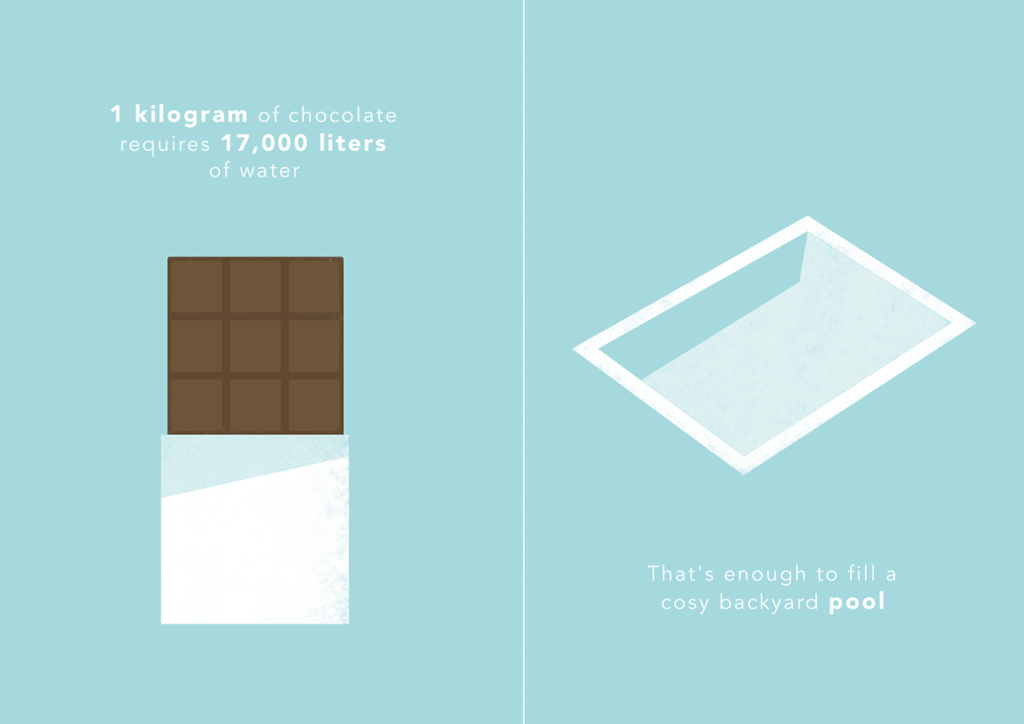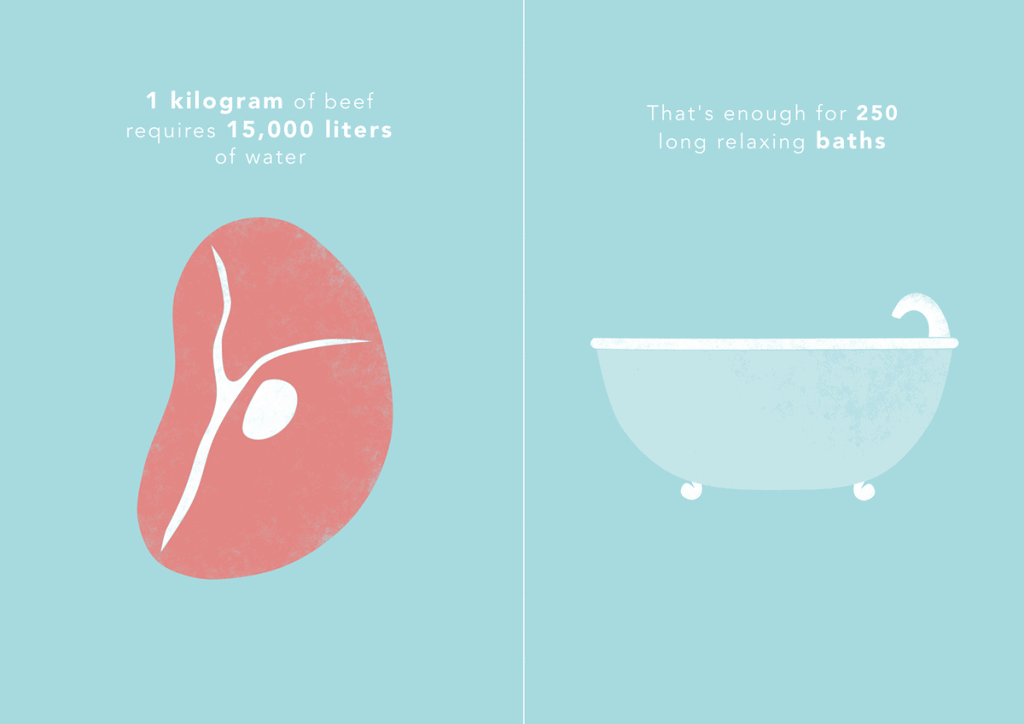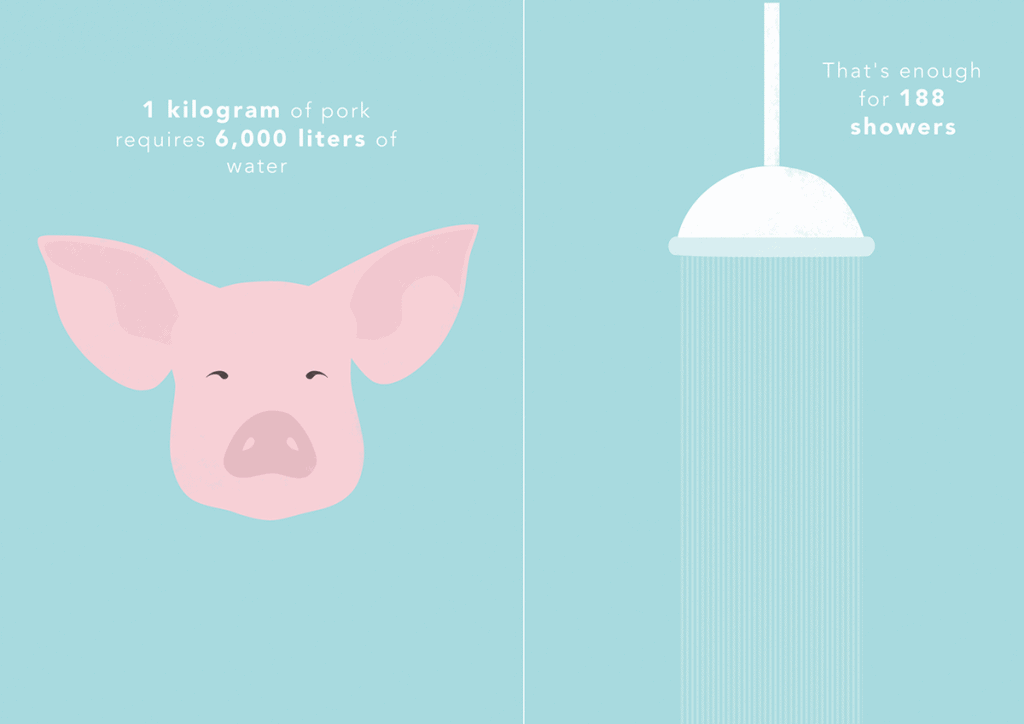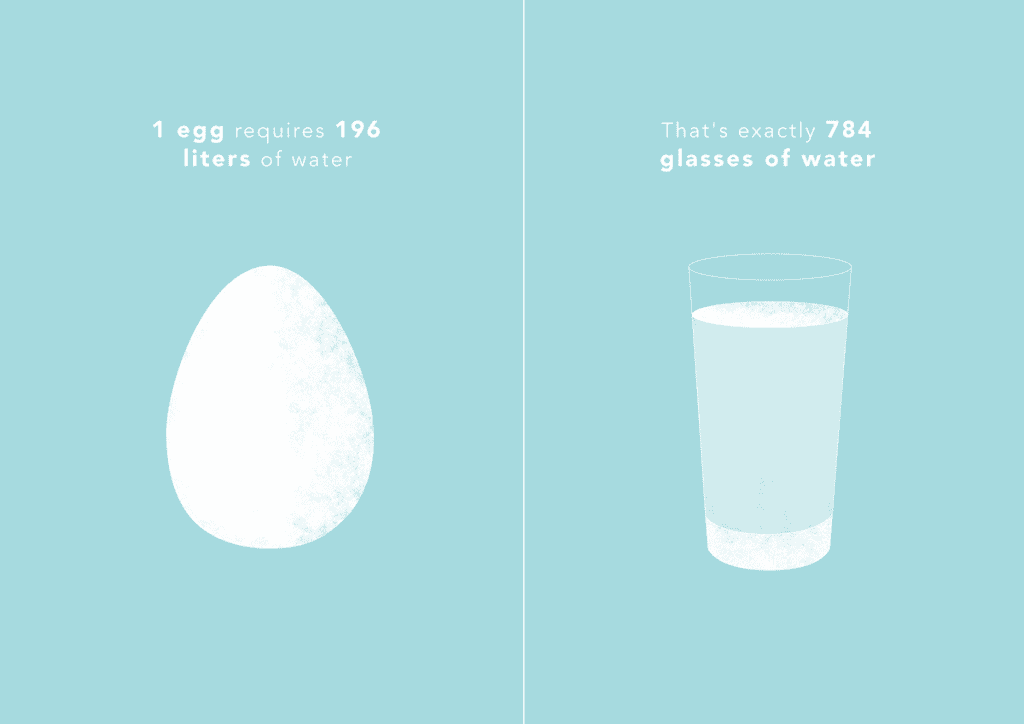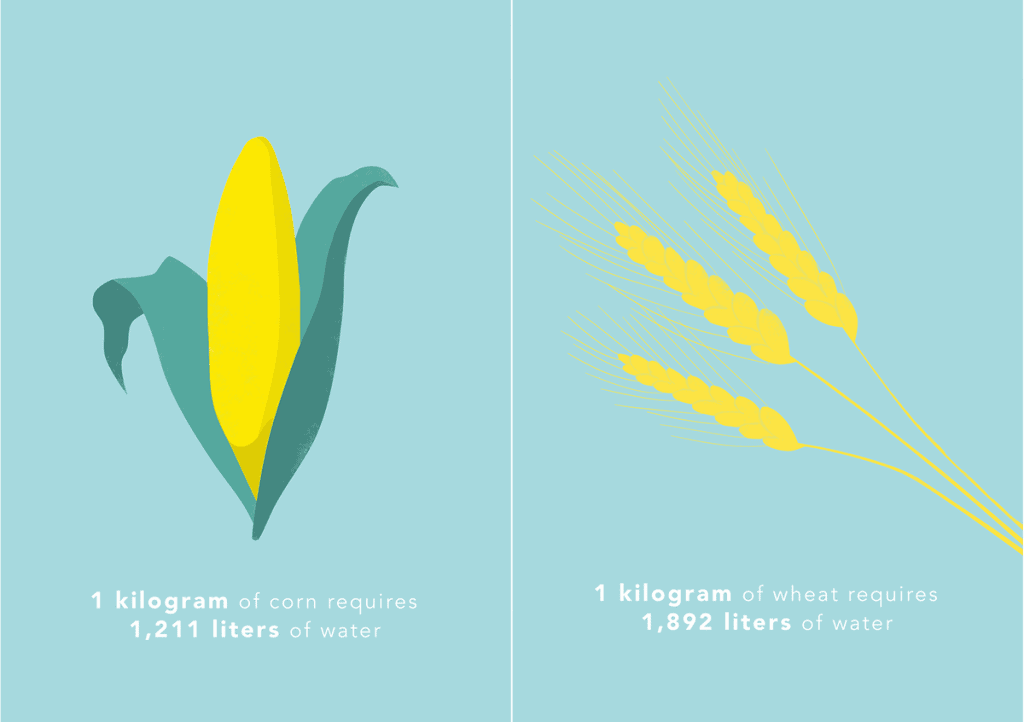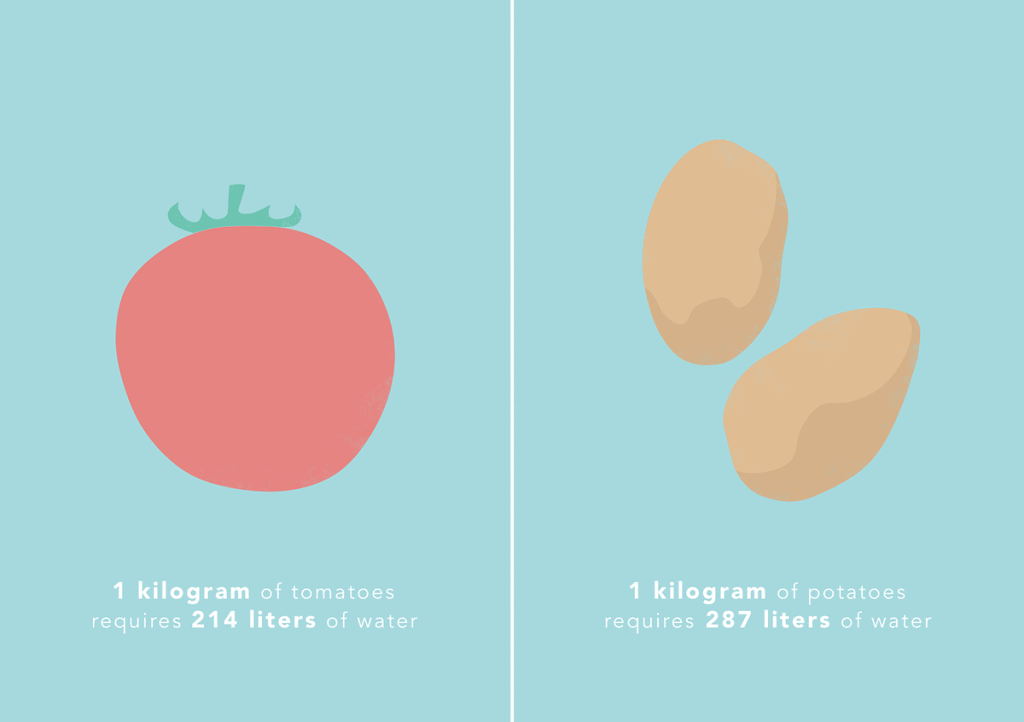Approximately 3.8tn cubic metres of water is used by humans annually with 70% being consumed by the global agriculture sector, according to a report issued by the Institution of Mechanical Engineers (IME). Strikingly, up to 50% of all food is thrown away before it gets the chance to reach consumers, often out of frivolous reasons. In terms of water that’s 550bn cubic metres that go to waste each year. At the same time, approximately 795 million people in the world are chronically malnourished and 1 in 10 lack access to clean water. While policy makers should take more notice and take measures to curb waste, there’s much you can do yourself to cut on waste. Eglė Plytnikaitė, an illustrator from Vilnius, Lithuania made an insightful infographic showing how much water goes into some of the most popular foodstuff.
“The “click” happened when I was reading about the advantages of the vegan diet. I’m a vegetarian for a long time but I never really understood why people go vegan before I read a bunch of articles about the dairy industry. One of the most shocking facts that I found was the data of an enormous amount of water that’s wasted in the meat and dairy industry. I searched for all the possible information about this issue and decided that I have to make it more visible. That’s how the illustration project “How much water do you eat” was born,” said Plytnikaitė for ZME Science.
“As the GRACE Communication Foundation has reported “the food we eat makes up more than 2/3 of our total water footprint” so I’m choosing the local plant based food what naturally helps me to safe a lot of water. I also ride a bike instead of driving a car, try to buy as less as possible and if I need something I aways check the second hand stuff first. However, I understand that I won’t change the world alone so I try to spread these ideas with my illustration projects such as “How much water do you eat” and “Environmental Issues,” she said when asked how she reduces her carbon and water footprint.
“I know that it’s really hard to change your comfortable routine and habits, especially when we are talking about food, but I’m sure that it’s really worth it. Choosing a little bit more local plant based food every day will dramatically change your water footprint, help the planet and also make you healthier, so why not to start today?” said Plytnikaitė for the ZME science readers.
Follow Eglė Plytnikaitė on Facebook/Twitter
Was this helpful?

